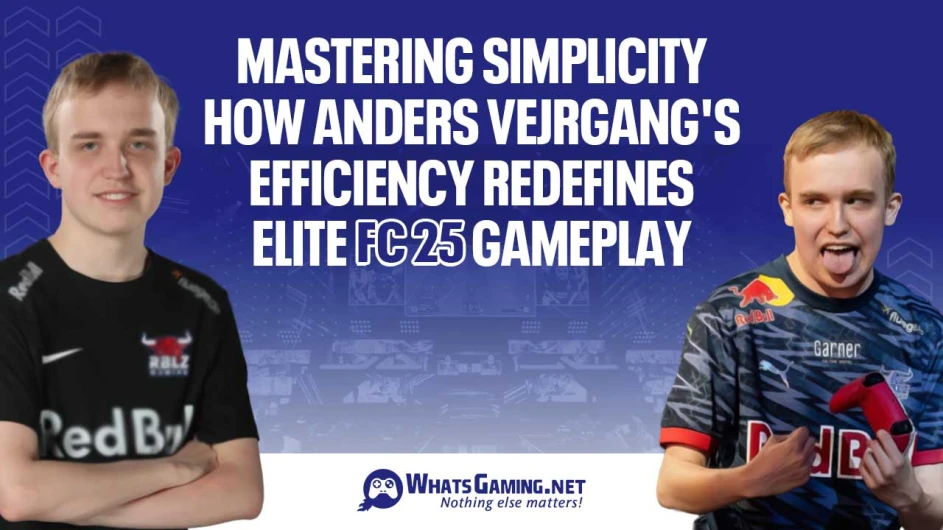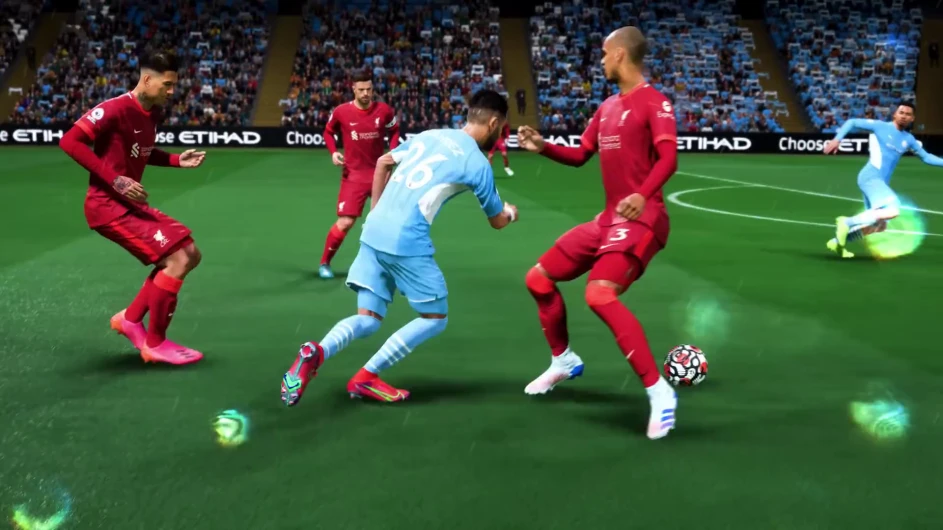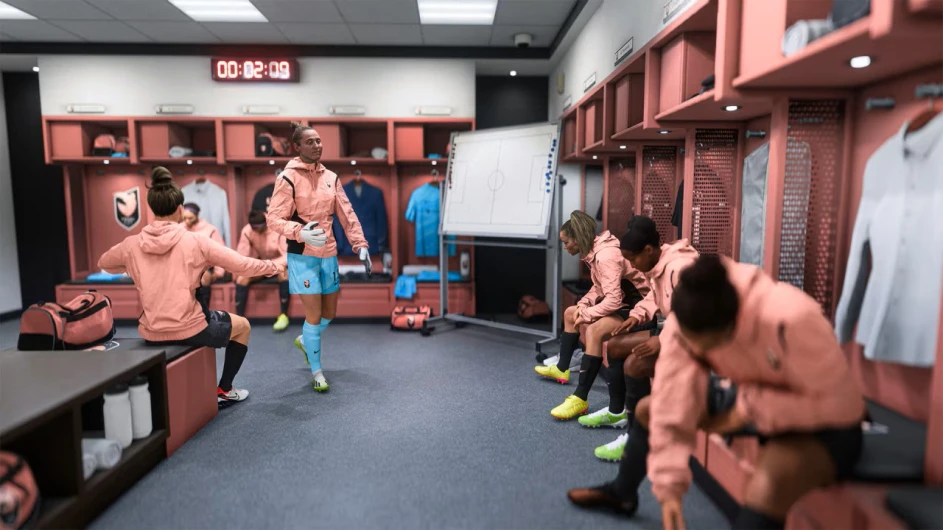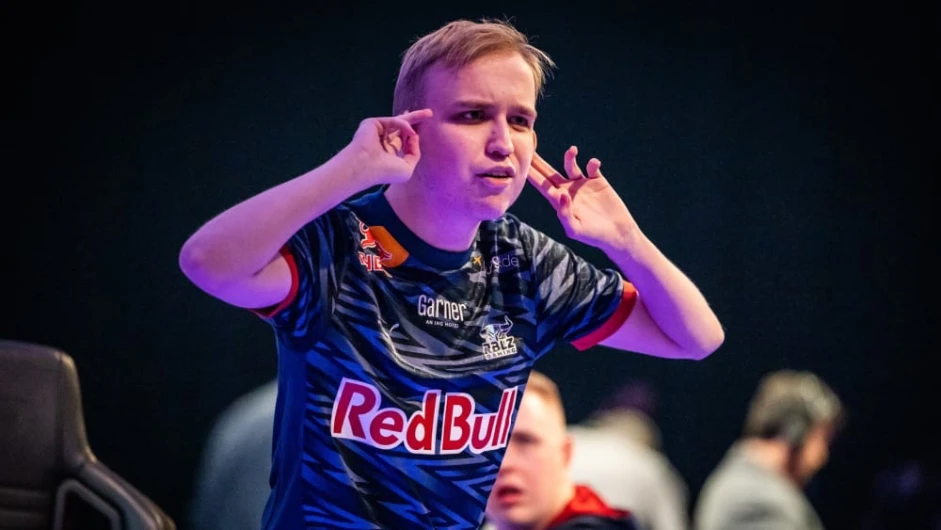
Mastering Simplicity: How Anders Vejrgang's Efficiency Redefines Elite FC 25 Gameplay
If you're aiming to become a top-tier player in EA FC 25 Ultimate Team, there’s one harsh truth you must face — laziness won't get you there. When I first began analyzing the competitive scene, one pattern stood out almost immediately. The elite players grind. They don’t just play — they practice complex skill moves, master overpowered in-game mechanics, and memorize meta tactics. The flashy plays? That’s what most aspire to perfect. But Anders Vejrgang is not like most players.
What makes Anders the deadliest attacker in FC 25 isn’t some gimmicky exploit or trendy meta trick. It’s something far more dangerous: surgical simplicity. No wasteful player locks. No unnecessary flicks or exaggerated crosses. He uses pinpoint passing, razor-sharp timing, and intelligent movement to dismantle opponents. Anders has mastered the essence of the game — the core fundamentals. His gameplay is a clinic in how the basics, when perfected, can outperform even the most technically advanced players. His rise is living proof that you don’t need to follow the crowd to win — you just need to outthink it.

Living in the Gray Zone: Anders' Positioning Brilliance
Most attackers hunt for space. Anders creates it. While many players tunnel vision into open channels or static formations, Anders thrives in the chaos — the blurry area between the wide flanks and central zones. He lives in the “gray zone,” that murky area defenders hate to cover. Floating between central lanes and touchlines, he exploits the indecision of defensive AI and human opponents alike.
He doesn't stay wide. He doesn't sit central. Instead, he constantly shifts between both, drifting in and out of dangerous pockets. This unsettles defenses, creating forced decisions: should the center back follow him wide, or should the fullback stay deep? Either way, their structure collapses. These calculated movements make Anders unpredictable during early build-ups and fast breaks. He can start wide, drag a defender, cut inside — and suddenly the play opens up for overlaps or one-two passes. That’s not just movement. That’s manipulation.
Elite Execution Under Pressure: The Pro Open Semi-Final Masterclass
One of the best examples of Anders’ tactical IQ came during his intense Pro Open semi-final match against a top French pro. The stakes were high, and the gameplay was faster than ever. In this match, Anders retrieved the ball deep in his half and immediately started working the wing-central hybrid zones. First, a pass to his winger in the channel — then back into his striker. He repeated this loop, each pass subtly manipulating the opponent’s shape.
He dragged the French defense out with wide dribbling, then snapped it back inside. At one point, he used two quick passes to shift momentum, causing a center back to overcommit. That moment of imbalance? Anders capitalized instantly. A split-second through ball to his midfielder, and a deadly finish followed. This wasn’t luck. It was a textbook example of how Anders turns structured chaos into precision offense. His constant movement created uncertainty. That uncertainty opened the door. Anders walked right through it.

Dribbling with Purpose: Why Simplicity Wins
In the world of FC 25, flashy skillers often get the spotlight. But Anders? He doesn't need flair. His dribbling style is subtle yet lethal. Every movement is efficient — no wasted flicks or unnecessary spins. He uses sharp angle changes, refined left-stick control, and agile touches to bait defenders. These micro-movements aren’t just for style — they’re for survival.
In high-pressure scenarios, especially near the final third or under midfield congestion, Anders uses short, calculated touches to keep possession. This draws defenders out while keeping full control of the ball. Then, when they lunge or step out, he slips by or combines into a pass. His simplicity keeps defenders guessing. And because he doesn’t telegraph his intentions, he’s twice as hard to stop.
The Bait and Switch: Anders’ Psychological Warfare
Every touch Anders makes serves a purpose. His gameplay isn't about reaction — it's about deception. He often sees the right play before it’s obvious, but chooses to mask it. He’ll fake a pass, hold the ball for a second, and force the defender to overcommit. Then — boom — the real play unfolds.
This mind game is particularly effective in tight zones. One of his signature tactics is the fake setup. For example, he’ll pass to a midfielder, then back to the winger. From there, he feigns a striker pass but instead pauses just long enough to bait a block. Then, a swift angle shift reopens the lane, and he sends a killer ball through. It’s not about speed. It’s about timing — manipulating reactions until defenders sabotage themselves. Every move, every pause is orchestrated with purpose.
First Touch is Everything: The Hidden Weapon in Anders' Arsenal
In FC 25, the first touch can be the difference between a turnover and a game-winning attack. Anders knows this better than anyone. His first touch isn't just a way to trap the ball — it’s a pre-move, a tactical weapon. He cushions passes perfectly, sets up future dribbles, or shifts the ball into attacking lanes without delay.
Under pressure, many players fumble. Anders thrives. When defenders close in, he uses his first touch to escape the press or bait it even further. After triggering a manual run, he receives the ball and immediately preps for the next phase — often a deadly through pass or a shot. This directional control keeps his tempo sharp and his intentions clear. Slip once, and he’s already three steps ahead.
Constant Forward Momentum: No Time for Hesitation
What separates Anders from most players is his absolute refusal to stall. Every play, every pass, every dribble is aimed forward. Even when recycling the ball or resetting a play, he does it with aggression. The moment an opponent missteps, Anders is gone — attacking the gap, threading the needle, finishing clinically.
In one match, after baiting a midfield press, Anders spotted a striker lane. Without hesitation, he played the pass, cut inside with a quick stepover, and drew out defenders. Then, he passed backward to relieve pressure, reset the shape, and pounced again. The goal? Clinical. That’s Anders’ style — wait for nothing. Punish every slip.

Orchestrated Movement: L1 + R1 Triggers Like a Symphony
Anders doesn’t just play the ball — he commands the entire attacking shape. Using L1 passes and R1 short calls, he creates constant off-ball movement that overwhelms defenses. He might send a winger running with L1 while calling a midfielder short with R1 — all in one fluid sequence. This forces his opponent to defend in two directions at once.
This push-pull method creates hesitation. If the defender tracks the run, the ball is reset and quickly switched. If the defender steps to the ball, the run continues unmarked. In wing-central hybrid zones, Anders excels at this. He passes to a midfielder, sends a winger on a run, pulls a player short — then hits the third man, who’s wide open. Every pass is part of a greater plan. The result? Defenses collapse.
Tempo Control: Slowing Down to Speed Up
Pace is Anders’ secret weapon not just his top speed, but how he controls rhythm. He doesn’t always attack at 100 mph. Sometimes, he slows the game down just to bait pressure. When defenders step out? He hits the gas. This stop-start rhythm throws off even elite opponents.
Against high press or low block formations, he’s patient. He waits, draws them in, breaks one line, then explodes forward. This tempo manipulation ensures the opponent is always reacting, never initiating. That unpredictability? It’s why they can’t pin him down.
Pressure as Offense: Defending with Aggression
Anders doesn’t just defend to survive. He defends to strike. He applies intense high pressure, wins the ball in dangerous areas, and restarts his attack within seconds. The goal is simple — the more chances he has, the more he scores.
After losing possession, Anders presses immediately. His second-man press forces quick decisions from the opponent, often resulting in poor passes or rushed transitions. It’s a trap. And when the ball turns over? Anders is already in motion. Defense becomes attack. Chaos becomes opportunity.
Controlled Consistency: Why Repetition Wins
Anders’ most underrated strength is his mental consistency. Most players change tactics when something fails. Anders doubles down. If a pass doesn't work the first time, he tries again. If a dribble fails, he repeats it. Why? Because pressure breaks eventually. It's not if; it’s when.
This repetition creates inevitability. Even when defenders catch on, they can't always stop what’s coming. It’s like facing the same chess move over and over, knowing the checkmate is coming, but not being able to stop it. Anders keeps executing until it breaks you. That’s the formula. Cold, brutal, and elite.

Conclusion: Anders Vejrgang — The Blueprint for Winning FC 25
Anders Vejrgang is not just a great player he’s a tactical genius who redefines what it means to be elite in EA FC 25. His mastery of simplicity, control, movement, and pressure forms a deadly combo that’s nearly impossible to counter. If you want to elevate your own game, stop chasing flash start chasing Anders’ formula.
He’s not the flashiest. He’s the smartest. And in competitive FC 25, that’s what makes you unstoppable.
Learn from Anders. Study the gray zones. Master the tempo. And become the player every opponent fears to face.
We will share more updates on FC 25 in separate articles. If you found this information helpful or would like to learn more, please be sure to explore the other articles on our site.
Granit Xhaka - TOTS Honourable Mentions: Player review
FC 25 NWSL Team of the Season Predictions: Every Star You Need to Know



